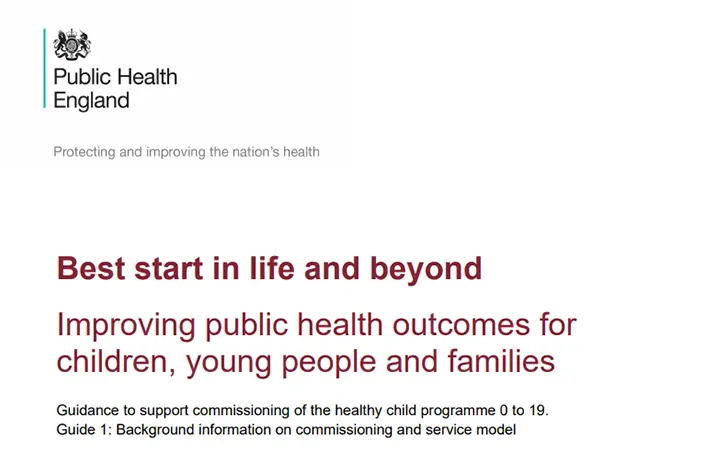Yesterday afternoon, the long-awaited refreshed commissioning guidance for health visiting and school nursing was published by Public Health England (PHE). This guidance supersedes the previous guidance which was last updated in March 2018.

The guidance is presented in a suite of 3 documents to assist local authorities in the commissioning of health visiting and school nursing services to lead and co-ordinate delivery of public health for children aged 0 to 19.
In PHE’s announcement yesterday, Wendy Nicholson, Deputy Chief Nurse and Deputy Head of the World Health Organization Collaborating Centre for Public Health Nursing and Midwifery at Public Health England stated:
“Setting the foundations for health and wellbeing during pregnancy and in the early years is crucial to ensure we give every child the very best start in life as possible…
We are publishing the revised health visiting and school nursing model, which replaces the “456” model, to focus further on needs assessment so that interventions are personalised to respond to children and families’ needs across time”.
At the iHV, we are still working our way through all the details and their implications on health visiting practice. Important changes and considerations include:
- The inclusion of two additional universal contacts at 3-4 months and 6 months. These will provide important opportunities to address key public health priorities including, perinatal mental health, child development, breastfeeding, childhood obesity prevention, immunisation uptake and accident prevention.
- The language of the “4,5,6 model” has been removed; whilst the principles behind the model were sound, there has been widespread agreement that it had inadvertently driven a “race to the bottom” in some areas. The updated document contains welcomed recognition that the health visiting offer is much bigger than 5 mandated contacts, these are just a “gateway” into the service and as PHE highlight, “many areas are offering so much more” – we hope that this will indeed become the norm.
- An increased emphasis on “personalised” care as well as professional and clinical judgement. This is a helpful reframing of policy which underpins the professional autonomy of the health visitor which is so important if we want to avoid a “one size fits all” approach.
- Updated language and increased emphasis on health visitors’ contribution to recent policy priorities including, early language development, preconception care and vulnerability.
- Increased scope for “Emotional Health and Wellbeing Assessments” – alongside maternal mental health, these will now include fathers and babies. In particular, this includes a clear statement that, “Health visitors assess maternal mental health at all health visiting mandated reviews” (NOTE: health visitors, not health visiting; document 2, p.24).
- We note that in places within the document, there has been a shift in language referring to health visiting, rather than “health visitor”. Will this lead to further erosion of “health visitors” from key elements of the Healthy Child Programme?
We encourage you to read it and tell us your views – we are working our way through the detail.
From what we have read and digested so far, there is a lot in these documents that we welcome. The obvious “elephant in the room” is the lack of details on funding, accountability and essential strategy to address the current workforce issues in health visiting. Let’s hope that these are forthcoming to support the translation of this policy into strategy and the action needed to achieve PHE’s ambition of “No child left behind” – which of course is an ambition that we wholeheartedly share.


